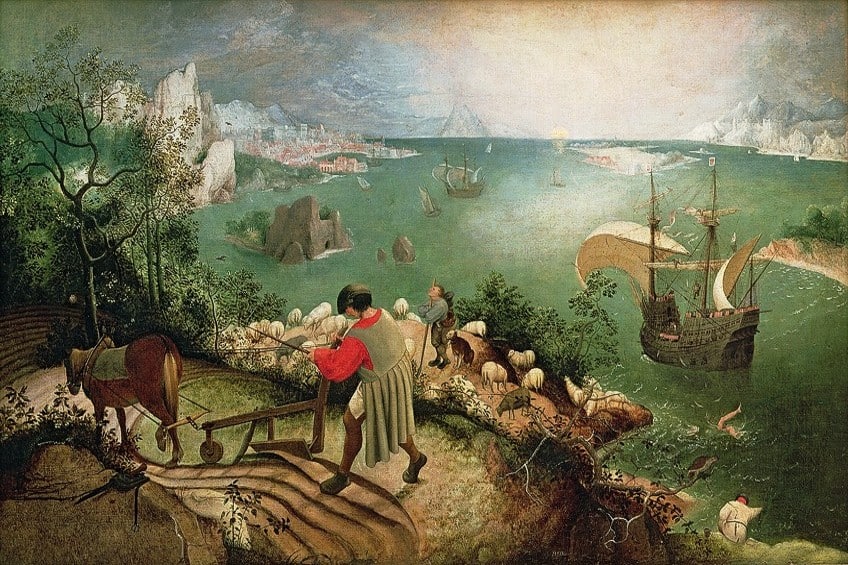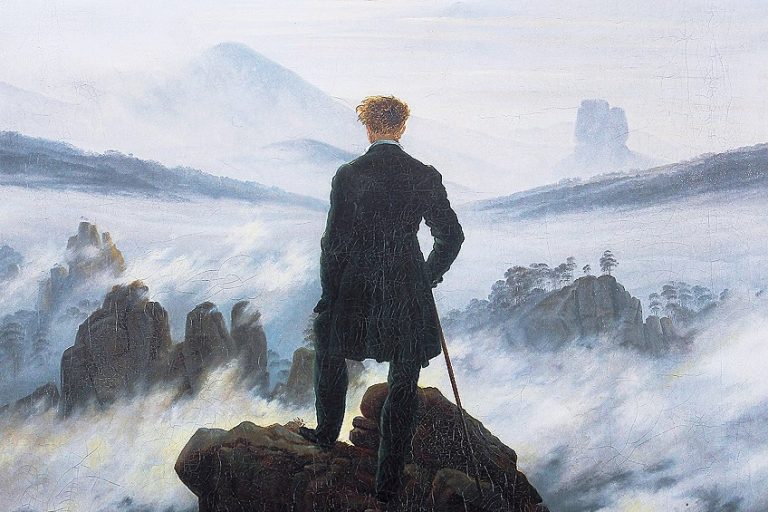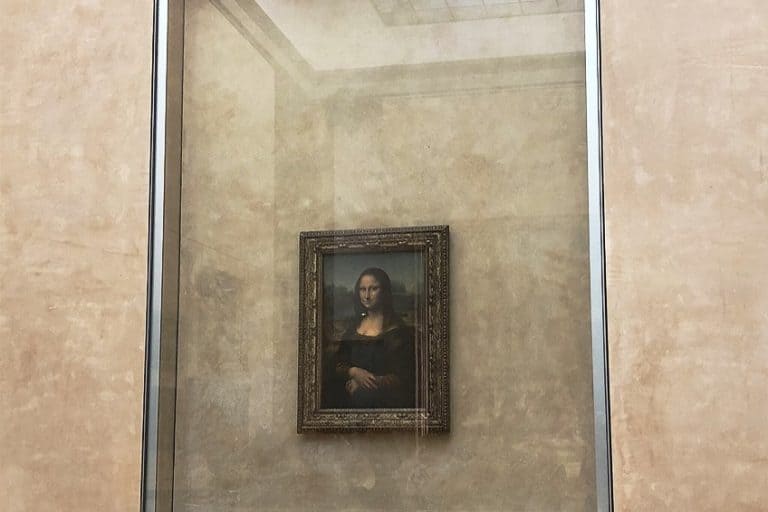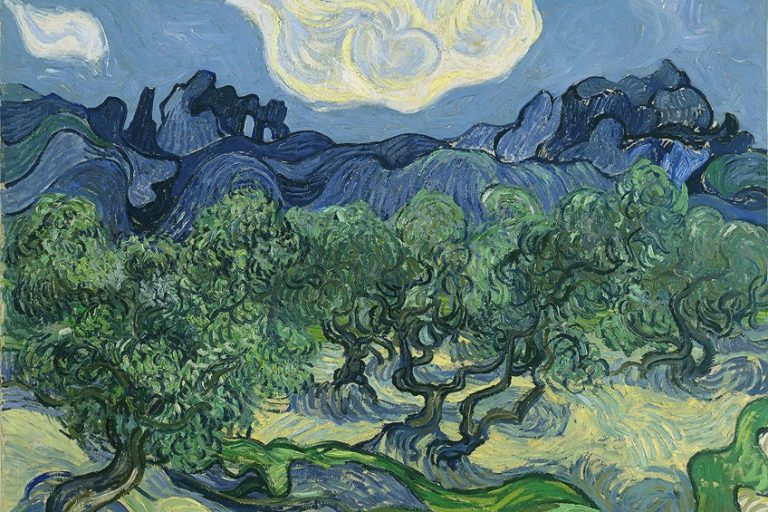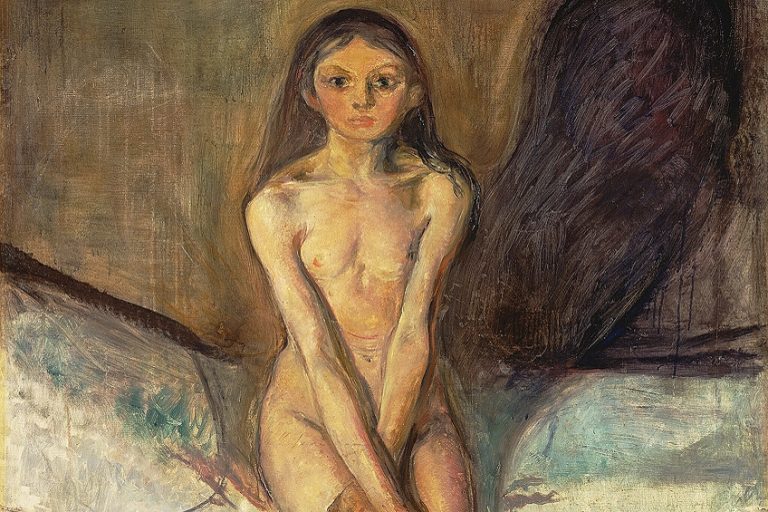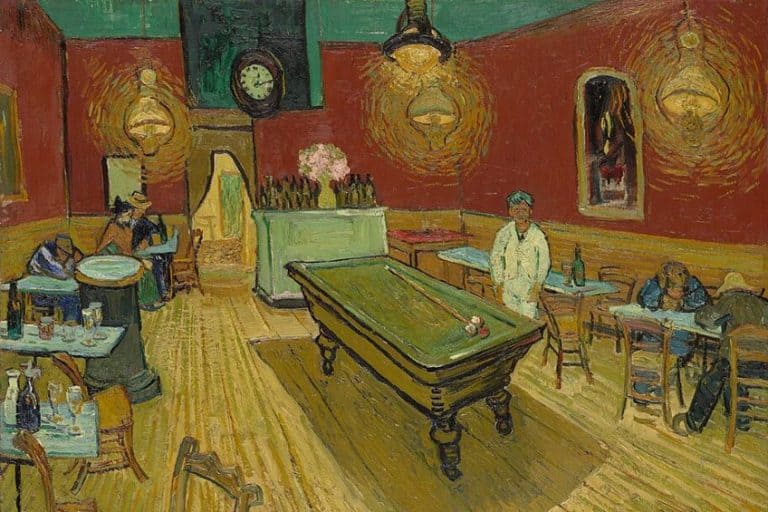“Landscape With the Fall of Icarus” by Pieter Bruegel – A Deep Dive
The mythological tale of Icarus is an often-portrayed theme in art history and one that was given a different slant in Landscape with the Fall of Icarus (c. 1560) by Pieter Bruegel the Elder, which is the painting this article will discuss.
Artist Abstract: Who Was Pieter Bruegel the Elder?
Little is known about the life of Dutch artist Pieter Bruegel the Elder, and it has been surmised that he was born in the city called Breda in the Netherlands between the years 1525 and 1530 and died in September 1569. He was a multi-talented artist, working in media like painting, drawing, and printmaking.
He reportedly lived in Antwerp for some time and was part of the Guild of Saint Luke in Antwerp, and he also traveled to places like Italy.

He married Mayken Coecke in 1563 and had two sons, namely Pieter Bruegel the Younger and Jan Bruegel the Elder, who were also artists. He was popular for his landscapes and depictions of peasant life, as well as religious and mythological subject matter, but largely more common, everyday scenes that set him apart as one of the leading Northern Renaissance artists.
Some of his more famous artworks include “The Netherlandish Proverbs” (1559), “The Tower of Babel” (1563), and “The Hunters in the Snow” (1565).
Landscape with the Fall of Icarus (c. 1560) by Pieter Bruegel the Elder
| Artist | Pieter Bruegel the Elder (c. 1525/1530 – 1569) |
| Date Painted | c. 1560 |
| Medium | Oil on canvas |
| Genre | Landscape painting |
| Period / Movement | Northern Renaissance |
| Dimensions (cm) | 73.5 x 112 |
| Series / Versions | N/A |
| Where Is It Housed? | Musées Royaux des Beaux-Arts de Belgique, Brussels, Belgium |
| What It Is Worth | Uncertain |
The following article below will first discuss a contextual analysis of Landscape with the Fall of Icarus by Pieter Bruegel the Elder, who was Icarus and what is the primary interpretation associated with this painting? A formal analysis of the artist’s stylistic applications will also be presented, starting with a visual description of the subject matter.
Contextual Analysis: A Brief Socio-Historical Overview
Pieter Bruegel the Elder was also known as “peasant Bruegel” because he often painted scenes with peasants in them and narratives that would often follow Netherlandish proverbs. Some of which he weaved into the Landscape with the Fall of Icarus painting, which is easy to miss if you are not familiar with it. Some of the hidden symbolism can be found in visual subject matter or what is known as iconography, for example, a man’s head is visible in the bushes to the left of the composition, which has been thought to refer to the proverb “No plough will stop for a dying man”.
The other two important references include the large white sack against the rock in the lower left of the composition, which could be full of seeds, alluding to the proverb about seeds that cannot grow when sown on rocks.
Not too far from the pack of alleged seeds, on the rock, is what appears to be either a dagger or a sword, in a leather pouch/purse, which could allude to the proverb that has been quoted by sources as “Sword and silver requiring intelligent hands”.

However, other scholars have stated that the plowman with his dagger and purse could have political symbolism and related to the King Philip II of Spain who also ruled the Netherlands, and the war between France as well as large taxations in the country. It is important to note here that there is extensive research around the meaning of Landscape with the Fall of Icarus by Pieter Bruegel the Elder and there are many interpretations of the symbolism and what the artist truly intended it to portray, and the abovementioned theories some of the more common interpretations that have been widely referred to.
Is It Really Pieter Bruegel the Elder?
There is wide scholarly debate about the originality of Landscape with the Fall of Icarus and that it could possibly not be by Pieter Bruegel the Elder. An often referred to study from the journal article, Radiocarbon Dating of Canvas Paintings: Two Case Studies (1998) by Van Strydonck, M.J.Y, Masschelein-Kleiner, L, Alderliesten, C, and De Jong, A.F.M., suggests that it could be a “lost” copy.
Because it was done in oil paints, the work raises more questions about the accuracy of the painter because reportedly, the artist painted in tempera.
Other related studies around the originality of the painter explore the altercations done to the painting over the years, namely the overpainting and stretching of the canvas, as well as that it was possibly transferred onto a canvas. There are several other conjectures about the Landscape with the Fall of Icarus painting and its artist, and reportedly no finalized conclusions have been made.
Mythology, Comparisons, and Inspirations
The Landscape with the Fall of Icarus painting is based on the mythological tale of Icarus who flew too close to the sun after he and his father, Daedalus, escaped from the prison they were held in by King Minos; they escaped from makeshift wings that Daedalus made from feathers and wax.
Icarus’ father cautioned him about flying too close to the ocean and the sun, but because he became too excited, he did not heed the caution from his father, and the wax melted from the sun’s heat, which caused him to fall.
The narrative of the painting is reportedly based on the Roman poet Ovid’s famous publication Metamorphoses (8 CE), more specifically from Book Eight, which features Icarus’ story. There are differences that have been noted between Ovid’s description and the visual depiction of the tale included in the Landscape with the Fall of Icarus painting, one of the more common examples include the fisherman, the plowman, and shepherd.
In Ovid’s description, the three men all look up at the sky at the two flying figures, but in the painting, Icarus is drowning, and the three men appear emotionally detached from what is happening, except for the shepherd who appears to be looking at something, which could be related to Icarus’ tale. The above-mentioned viewpoint about the men’s indifference to Icarus’ suffering was explored in the poem Musée des Beaux-Arts (1938) by Wystan Hugh Auden, who was inspired by the Icarus tale and the Landscape with the Fall of Icarus painting when he visited the Musées Royaux des Beaux-Arts.
Formal Analysis: A Brief Compositional Overview
The formal analysis will look at what is visually depicted in the Landscape with the Fall of Icarus by Pieter Bruegel the Elder with a closer look at how the artists applied the various art elements and principles.
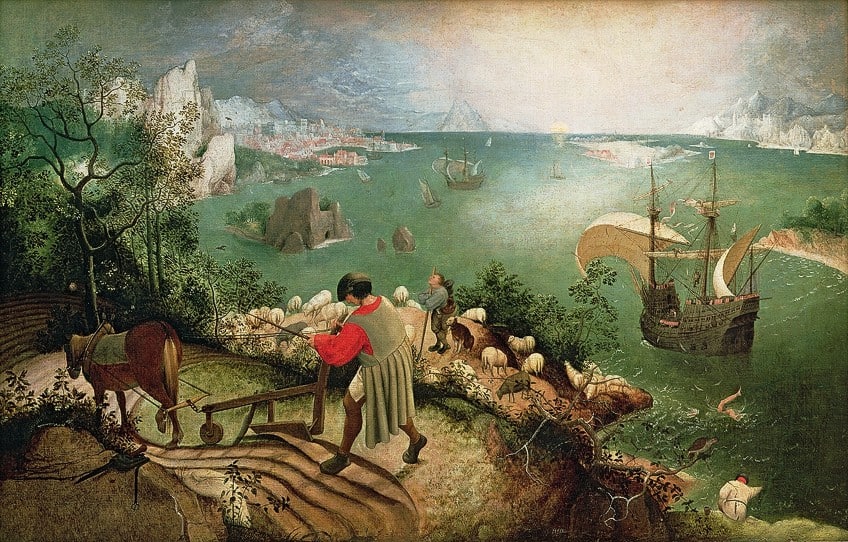
Subject Matter: Visual Description
There is quite a lot to see in the Landscape with the Fall of Icarus by Pieter Bruegel the Elder, and it appears to be an everyday scene along the coast side. It depicts an aerial view of the ocean and sky in the background with several mountainous regions dispersed in the distance. There is a small town to the left in the background with what appears to be an open harbor area where boats and ships can dock.
There are also several boats and ships further out on the blue/green seascape in front of us and a small island just off-center. In the far distance is the setting sun halfway visible on the horizon line.
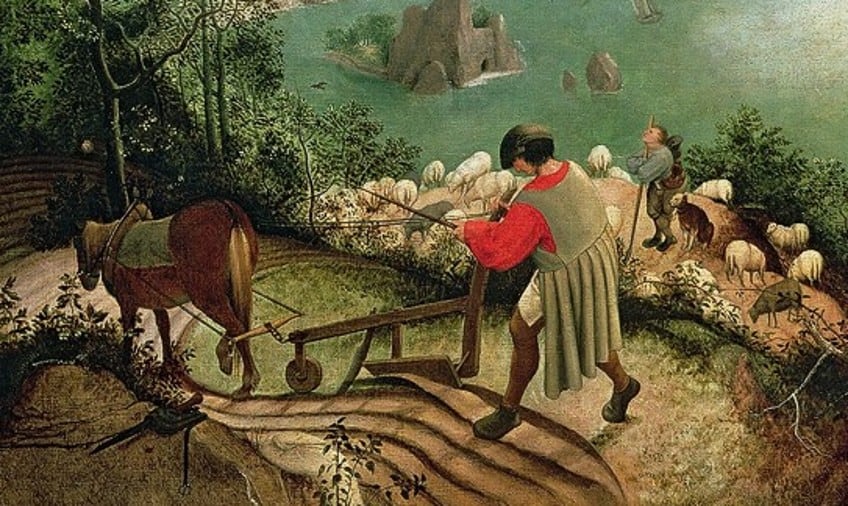
In the foreground is a hill or another part of a mountain top, of which we, the viewers, can see a winding pathway, furthermore, this mountainside appears to have two levels, on which a top is a man leading his horse with a plow attached.
He is wearing a bright red undershirt with long bulbous sleeves and what looks like a hat or cap on his head and holding a whip in his left hand while his head is slightly bowed hiding most of his face. The bottom level of the mountain depicts another man, standing and holding a long walking stick with his dog to his left (our right).
His head is slightly tilted to his right (our left) looking up at something drawing his attention. There are various sheep grazing around him suggesting that he is possibly a farmer walking his flock. The lower path appears to lead to where the water meets it, to the lower right of the composition, where yet another man sits on an embankment appearing to be fishing. His right arm is outstretched towards the water with his fishing rod in hand.
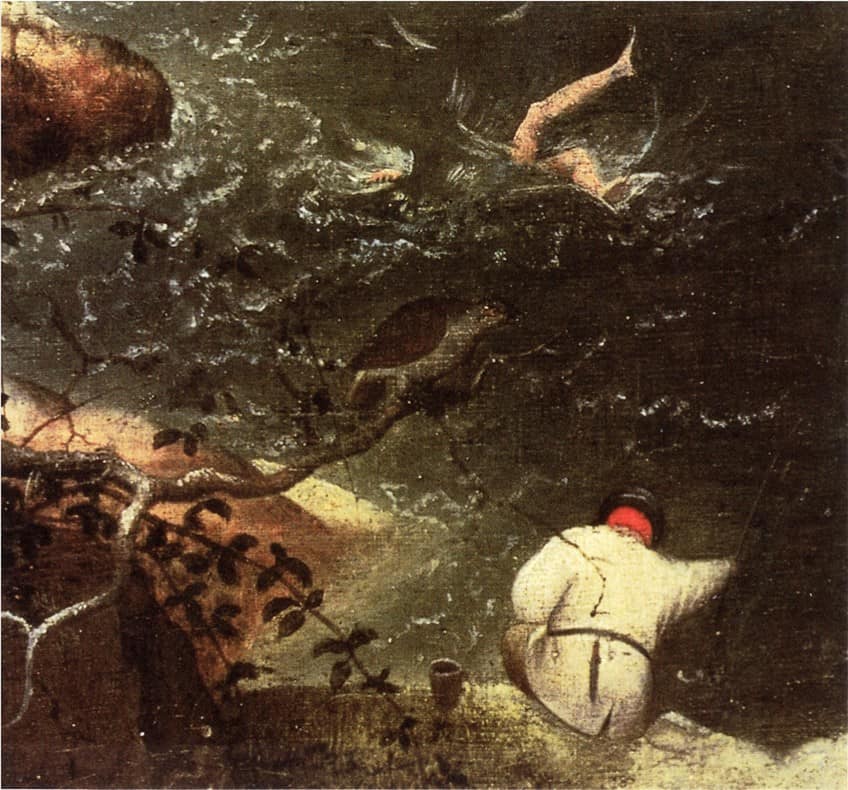
There is also a partridge perched on a tree branch, and several other trees and green bushes in the foreground, growing on the mountaintop. The most significant and seemingly insignificant part of this Landscape with the Fall of Icarus painting is the two legs splashing in the water, along with part of a hand, not too far away from the man who is fishing. This is undoubtedly Icarus who plummeted from his plumed wings that were meant to save him.
Color
The color scheme in the Landscape with the Fall of Icarus is mostly composed of greens, blues, and browns, which create various atmospheric effects like the haziness for the background that further emphasizes the depth of the vast landscape and the clearer focus in the foreground.
Furthermore, Pieter Bruegel the Elder also utilized darker areas of shading to further create the effect of depth, for example in the bushes to the left of the foreground, the bushy patch in the lower right foreground, as well as the darker area of water to the lower right edge of the composition.
Texture
There are a variety of implied textures in the Landscape with the Fall of Icarus painting, which also echoes textures found in real life, for example, the smooth rock surfaces of the surrounding mountains, the wavy lines that compose the water, the rougher barky surface of the tree branches, the hardwood of the ship in the foreground, and the softer hazier sky and clouds above.
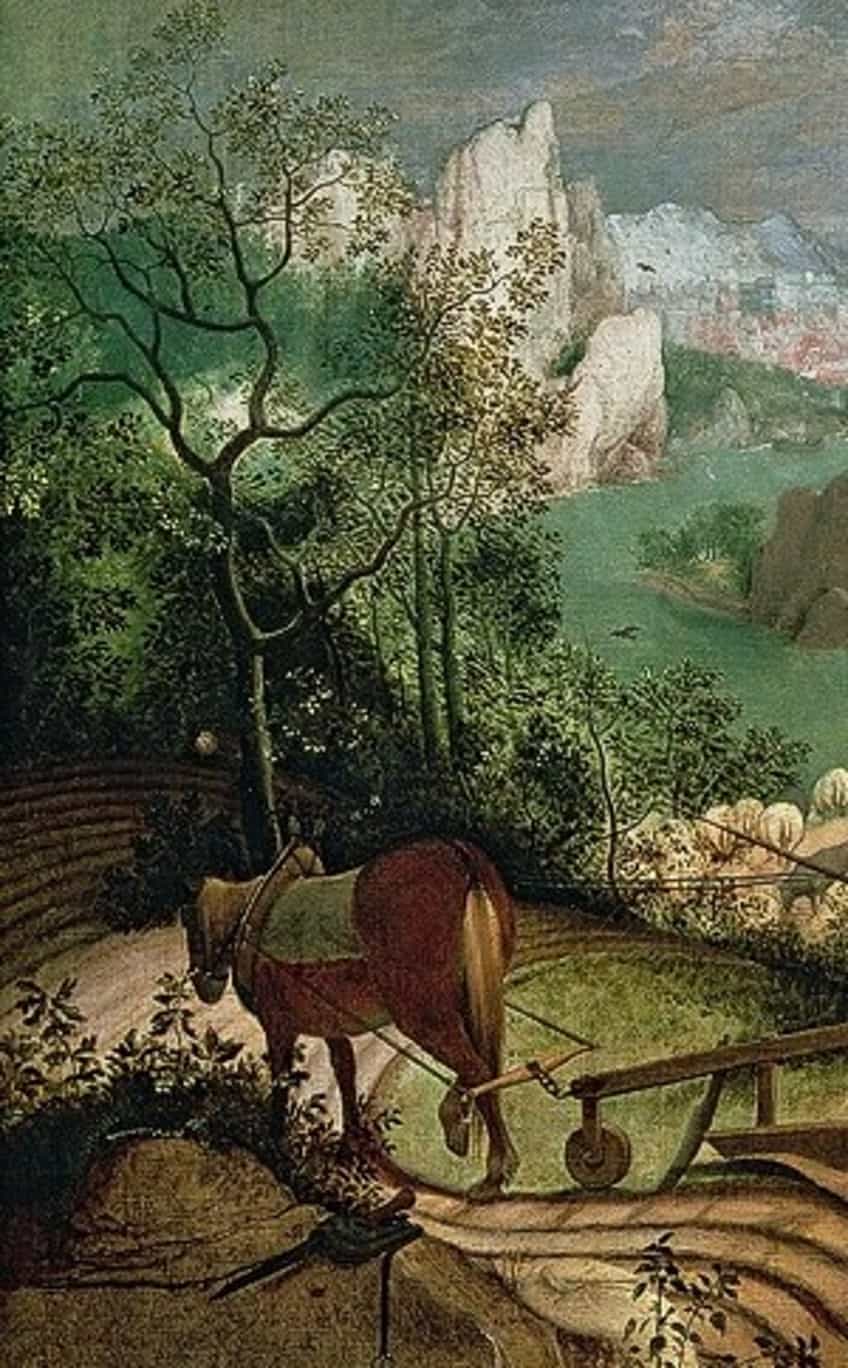
Line
Line as an art element can appear in various lengths and shapes and they are fundamental artistic tools because they create the outline of a shape or form, lead the eye to a focal point, or create rhythm and patterns. In the case of the Landscape with the Fall of Icarus painting, Pieter Bruegel the Elder created curving lines in the foreground where the farmer is plowing, which seemingly lead our gaze towards the fisherman in the bottom right corner, evidently also to Icarus’s swashing legs.
There are multitudes of lines created in this composition that seemingly keep our, the viewers’, gaze busy and we do not initially realize Icarus drowning in the bottom right corner, which also illustrates how art elements like lines can impact the subject matter and narrative of a visual composition.
Shape and Form
Landscape with the Fall of Icarus painting is mainly comprised of organic forms, which all appear with a three-dimensionality created through other art elements like color, for example, the craggy mountain tops and rounded rock formations, the more rounded and oval-like leaves of the trees, the concave shapes of the ship’s sails and the natural human and animal forms of the figures.
These types of forms are also commonly referred to as “free-flowing” or “irregular”, which means they can be asymmetrical and not follow the symmetry of geometric shapes, think of a square or a rectangle, there is more rigidity and definition to it.
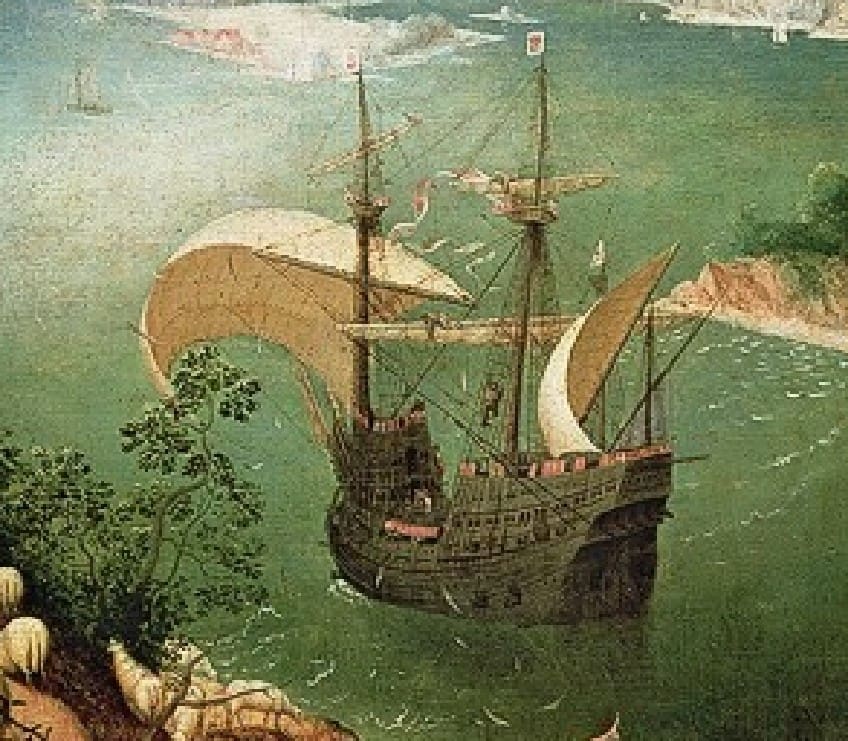
Space
The spatial composition consists of an aerial viewpoint, in which Pieter Bruegel the Elder depicts objects in diminishing sizes to convey a sense of scale and the depth of a vast landscape. However, it has been noted that the scale between the foreground figure and background objects like the ship does not appear correct leading to some notions that Bruegel did not paint this, as mentioned above.
Flying High
This article explored the Landscape with the Fall of Icarus by Pieter Bruegel the Elder, which is a painting that transports you on a visual journey of discovery, from beautiful seascapes and faraway mountains and cities to a mysterious plowman, fisherman, shepherd, and of course the supposed main character who is the mythological figure named Icarus, who is identified by his legs in the water.
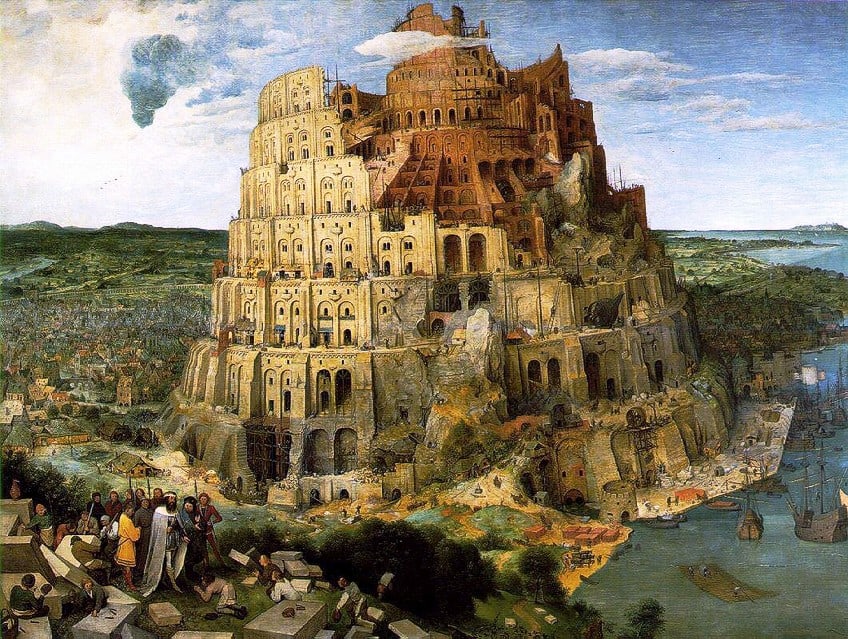
The “Landscape with the Fall of Icarus” painting is filled with meaning and allusions, and we have only touched on the surface of the extensive interpretations that have been posed around it, but what is evident is that Pieter Bruegel the Elder explored ideas of human nature that can veer towards indifference about life and others in pain and what happens when we become distracted by too ambitious proclivities and hurt ourselves. What interpretation can you find from this painting?
Frequently Asked Questions
Who Made The Fall of Icarus Painting?
The Northern Renaissance artist Pieter Bruegel the Elder painted the famous The Fall of Icarus (c. 1560) painting, which is an oil on canvas depicting the mythological narrative about Icarus who flew with wings bound by wax by his father Daedalus, which melted when he flew too close to the sun, causing him to fall into the ocean to his death.
Where Is The Fall of Icarus Painting?
The Fall of Icarus (c. 1560) painting is held at the Musées Royaux des Beaux-Arts de Belgique, otherwise, The Royal Museums of Fine Arts of Belgium, which is in Brussels. It was obtained in 1912 from The Sackville Gallery in London, England.
What Is the Meaning of The Fall of Icarus Painting?
The Fall of Icarus (c. 1560) painting by Pieter Bruegel the Elder explored themes around the apathy of mankind towards others who are suffering, focusing on your own life matters, and not being hindered by what is happening around you, as well as the insignificance of mythological subject matter over everyday life.
Alicia du Plessis is a multidisciplinary writer. She completed her Bachelor of Arts degree, majoring in Art History and Classical Civilization, as well as two Honors, namely, in Art History and Education and Development, at the University of KwaZulu-Natal, South Africa. For her main Honors project in Art History, she explored perceptions of the San Bushmen’s identity and the concept of the “Other”. She has also looked at the use of photography in art and how it has been used to portray people’s lives.
Alicia’s other areas of interest in Art History include the process of writing about Art History and how to analyze paintings. Some of her favorite art movements include Impressionism and German Expressionism. She is yet to complete her Masters in Art History (she would like to do this abroad in Europe) having given it some time to first develop more professional experience with the interest to one day lecture it too.
Alicia has been working for artincontext.com since 2021 as an author and art history expert. She has specialized in painting analysis and is covering most of our painting analysis.
Learn more about Alicia du Plessis and the Art in Context Team.
Cite this Article
Alicia, du Plessis, ““Landscape With the Fall of Icarus” by Pieter Bruegel – A Deep Dive.” Art in Context. March 16, 2023. URL: https://artincontext.org/landscape-with-the-fall-of-icarus-by-pieter-bruegel/
du Plessis, A. (2023, 16 March). “Landscape With the Fall of Icarus” by Pieter Bruegel – A Deep Dive. Art in Context. https://artincontext.org/landscape-with-the-fall-of-icarus-by-pieter-bruegel/
du Plessis, Alicia. ““Landscape With the Fall of Icarus” by Pieter Bruegel – A Deep Dive.” Art in Context, March 16, 2023. https://artincontext.org/landscape-with-the-fall-of-icarus-by-pieter-bruegel/.


